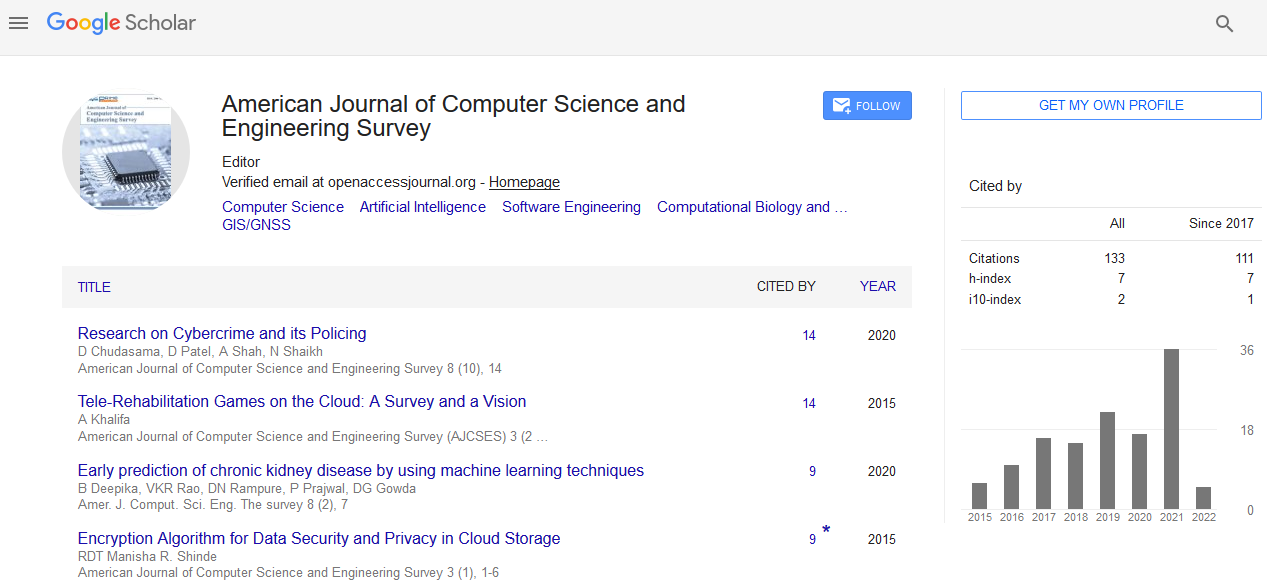Short Communication - (2023) Volume 11, Issue 1
Powered Floor Framework with Integrated Robot Localization
Kenji Tanaka*
Department of Computer Science, Nihon University, Japan
*Correspondence:
Kenji Tanaka,
Department of Computer Science, Nihon University,
Japan,
Email:
Received: 01-Mar-2023, Manuscript No. ipacses-23-16464;
Editor assigned: 03-Mar-2023, Pre QC No. ipacses-23-16464 (PQ);
Reviewed: 17-Mar-2023, QC No. ipacses-23-16464;
Revised: 22-Mar-2023, Manuscript No. ipacses-23-16464 (R);
Published:
29-Mar-2023, DOI: 10.36846/2349-7238.23.11.09
Introduction
The issue of power delivery is a prominent challenge in the
realm of mobile robotics. In the past, a powered floor-based
solution was suggested as a potential solution. However, in this
article, we propose an innovative system that integrates a powered
floor with a robot pose estimation system. The powered
floor is constructed using a series of interdigitated conductors
that provide a direct current power supply. These conductors
are interwoven, akin to the weaving of a carpet, creating a
checkerboard pattern of positive and negative pads. The robots
are fuelled by sliding contacts, and the voltage supply is
changed with a paired encoding that explicitly distinguishes every
guide striped power line. Each robot can self-localize using
this technique by examining the data obtained from the contacting
pins.
Description
We provide a detailed explanation of the theoretical framework
that enables simultaneous power delivery and localization. Additionally,
we showcase the results of an experimental evaluation
we conducted using a prototype of our powered floor
system. Delivering electrical power to mobile systems, including
robots, is a complex task in various fields, such as transportation,
automation, and logistics. Sliding contact-based power
supply systems are an effective solution for powering multiple
robots, particularly in swarm robotics applications where manual
battery recharging is a time-consuming process. These systems
are also straightforward to implement and cost-efficient.
Generally the floor is comprised of interdigitated stripes; these
are positive and negative guides. Versatile robots are furnished
with a progression of pins in touch with either the floor guides
or the encasing. The condition for the robot to be controlled is
that no less than one pin must be in touch with a positive voltage
stripe and essentially another pin must be in touch with a
negative voltage stripe. Numerous pins could be in touch with
positive or negative guides. Likewise, it might happen that a few pins are in touch with the protecting band that is mediated
between a positive and a negative director. Ordinarily, the
directing stripes are organized lined up with one another; their
size is picked by the quantity of pins and their separation from
the focal point of the robot [1-4].
Conclusion
In this work, we propose to take advantage of the fueled floor
not exclusively to convey power yet additionally to speak with
the robot to give confinement data; i.e., we utilize a one-way
correspondence starting from the earliest stage to the robot.
To be sure, the powerline correspondence issue has been addressed
since the mid 70 with the meanings of notable conventions.
The fundamental commitment and the creative part
of our work is the presence of an enormous number of correspondence
lines that can convey power and sign information
simultaneously. Novel power supply framework for versatile
robots. The execution of lengthy experiments with mobile robots
when containment is required is a relevant use-case for
our system. In our framework, we tell a tale using conductive
cushions arranged in a checkerboard pattern. Each cushion
transmits both electrical and electronic data, allowing each robot
to choose its own posture while experimentally proving our
powered floor’s ability to give power and pinpoint its location.
Acknowledgement
None.
Conflict of Interest
The author has declared no conflict of interest.
References
- Pastena L (2014) Catenary-free electrification for urban transport: An overview of the tramwave system. IEEE Electrif Mag. 2(3): 16–21.
[Crossref] [Google Scholar]
- Li S, Mi C (2015) Wireless power transfer for electric vehicle applications. J Emerg Sel Top Power Electron. 3(1): 4–17.
[Crossref] [Google Scholar]
- Jang Y (2018) Survey of the operation and system study on wireless charging electric vehicle systems. Transp Res Part Emerg Technol. 95: 844–866.
[Crossref] [Google Scholar]
- Seriani S, Gallina P, Wedler A (2017). Dynamics of a tethered rover on rough terrain. Mech Mach Sci. 47: 355–361.
[Crossref] [Google Scholar]
Citation: Tanka K (2023) Powered Floor Framework with Integrated Robot Localization. Am J Comp Science. 11:09.
Copyright: © 2023 Tanaka K. This is an open-access article distributed under the terms of the Creative Commons Attribution
License, which permits unrestricted use, distribution, and reproduction in any medium, provided the original author and source
are credited.

